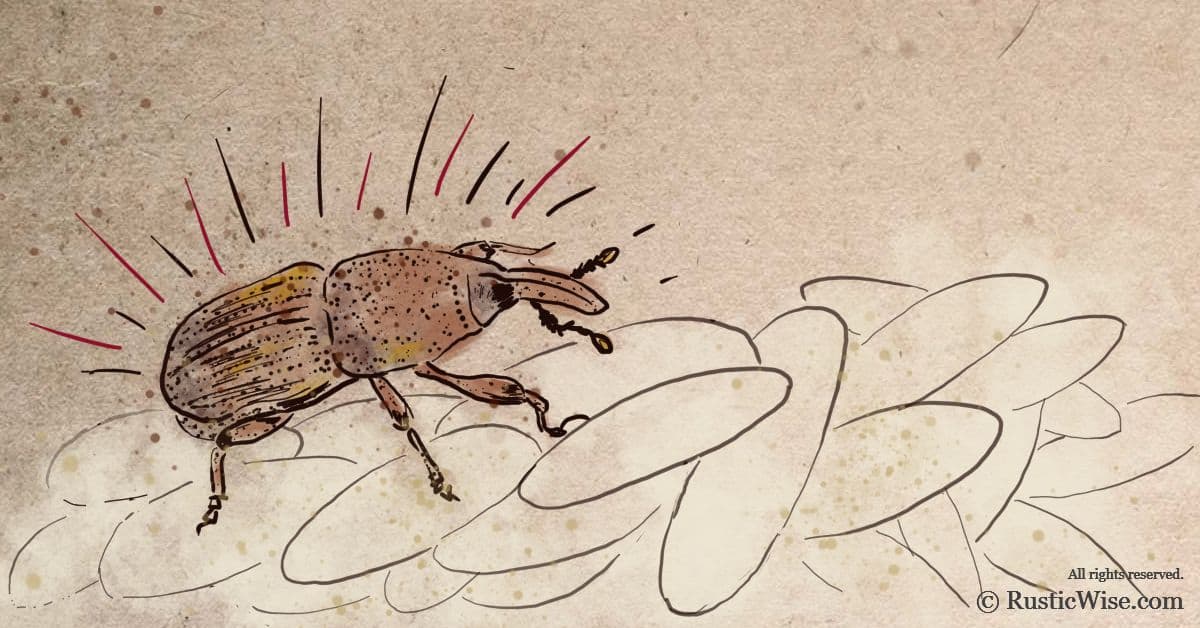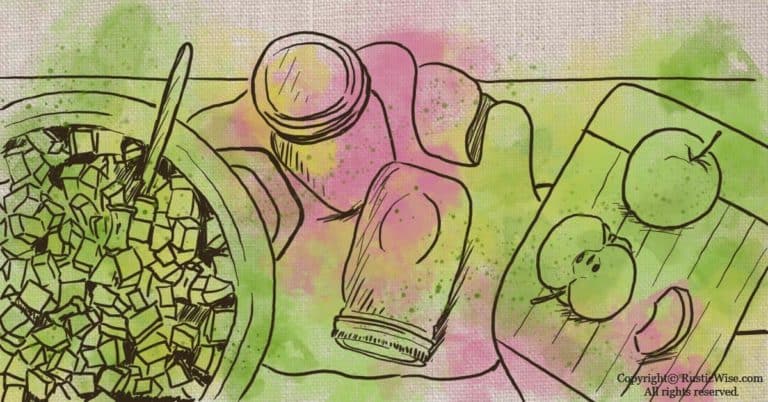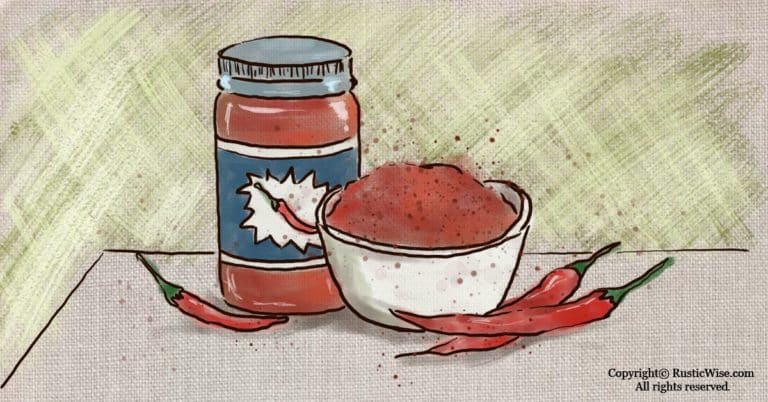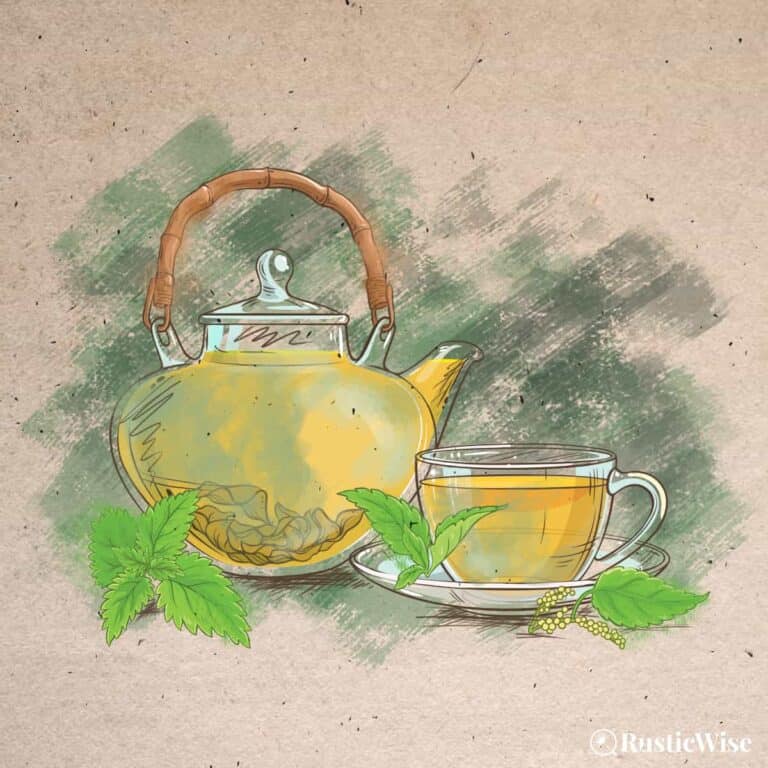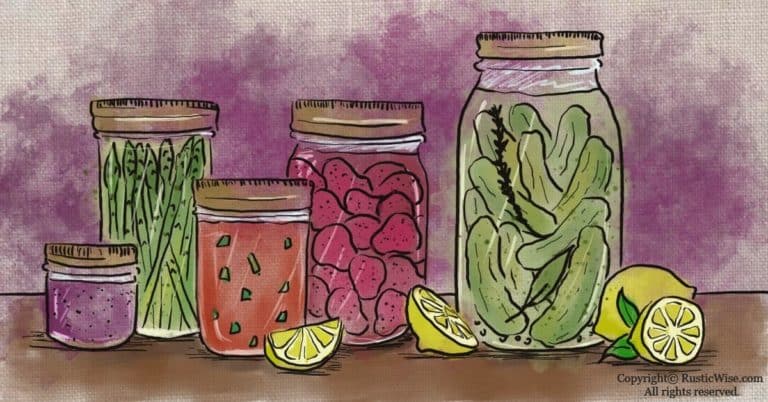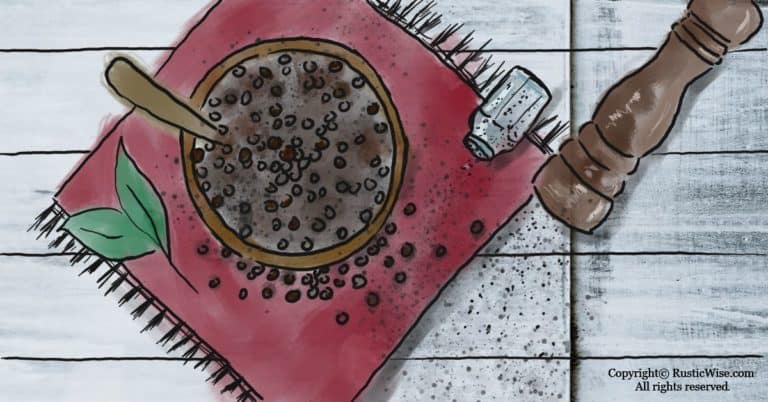Are Weevils Harmful to Humans?
So you rummaged through your pantry wondering what to cook for dinner and spotted them—weevils. These tiny, beetles with snouts can be black or reddish-brown and love to feast on grains. Most likely, you found them in your rice, flour, oats, or dried beans. There are many different types of weevils with the most common ones being granary weevils (also known as wheat weevils), and rice weevils.
So what should you do with the food? Well, that depends.
The burning question is: are weevils harmful to humans? While even the word weevil is enough to make some feel ill, weevils are safe to digest. So, if you accidentally ate some weevils with this morning’s breakfast, don’t fret—you won’t get sick.
However, the decision to throw out food depends entirely on the individual situation (and your comfort level with the presence of weevils versus the desire not to waste food). If there are lots (and lots and lots) of weevils present in food, I would personally lean towards chucking the food. The presence of weevils indicates a certain level of food degradation—both nutritionally and taste-wise.
But, if there are only a few weevils, maybe it would be worth salvaging the food. I think of old school grandmas who wouldn’t bat an eye at the sight of these wee pests and plucked them out without a second thought. Growing up with my grandma where things were saved, reused, and repurposed, wasting food was blasphemous. But to his (or her) own!
It’s also important to remember that both packaged food and fresh food have the possibility of containing some type of insect as it’s virtually impossible to remove all bugs during harvest, processing, packaging or shipping.
Can you get sick from eating weevils?
While the mere thought of ingesting weevils (and their eggs or larvae) might make you feel sick, no, eating weevils will not make you actually sick. They are not known to carry any infectious diseases.
Weevils find their way into our food in a number of ways—often they crawl in from cracks in walls, doors, or windows. But most likely, their larvae were already present in your food undetected and hatched while sitting in your pantry. This is particularly true with granary weevils that lay eggs inside kernels of grain.¹
I recently found some weevils in a box of pasta (a nasty surprise!). I had used half the box several weeks prior, and only sealed the box with some tape instead of using a sealed container.
Is it okay to eat flour with weevils in it?
The presence of weevils in flour means it likely wasn’t properly stored. If it’s a brand-new bag of flour, return it. If it’s flour that’s been sitting in your pantry for a while, you could try sifting out the weevils if there are only a few.
Again, make your own judgement call whether to salvage or chuck the flour. If there’s an abundance of weevils in the flour, I would be concerned about the affected taste and the possibility of the flour being stale. There’s also the chance that weevils have already laid eggs in the flour leading to the spread of more weevils.
If you’ve accidentally used the flour to make baked goods such as bread or muffins, some would say you’ve just added a bit of protein. 😉
The next time you buy a bag of flour, transfer it to an airtight Tupperware container or glass mason jar to keep weevils out.
Do weevils bite?
No, weevils don’t bite or sting humans or other household pets. They aren’t parasitic and instead weevils feed on rice, flour, beans and other grains found in your pantry. Adult granary and rice weevils lay their eggs inside kernels of grain. As they grow, they eat their way out and —surprise—you’ll soon find some adult weevils in places you’d rather them not be.
Can weevils infest your house?
Yes and no. While it’s true that weevils are a nuisance, they aren’t like other household pests like termites that do actual structural damage to your home. Common pantry pests like the granary and rice weevils don’t chew on furniture or fabrics.
Instead, some types of weevils (such as bean and strawberry root weevils) make their way into homes when the weather gets too hot or dry outdoors. You might notice an upswing in weevils during the hot summer months, or if you live in hotter climates.²
Weevil infestations usually occur outdoors and wreak havoc on farmer’s fields and outdoor crops. The chances of you having a weevil infestation in your home are slim.³ If you notice many outdoor weevils making their way into your home, try sealing cracks around doors and windows.
Granary weevils (the kind that feasts on grains, cereal and oats) on the other hand, likely made their way into your pantry as undetected eggs or larvae inside your store-bought food. It’s a good idea to rid your pantry of these pests as soon as you notice them to prevent them from laying more eggs.
Food storage tips to prevent weevil infestations
If you find weevils in your pantry, remove the infested food and discard if necessary. For salvageable food, transfer to airtight containers. At home, we’ve taken a liking to large food-grade storage containers (the 5-gallon variety) to store our grains.
You can try freezing foods for four to seven days to kill any eggs and larvae. Some people use their freezer to store grains and flour long-term and simply take out a small amount as needed.
You’ll want to remove all items from your pantry shelves and give them a good cleaning and vacuuming along edges and cracks. Use white vinegar to wipe down shelves.
Don’t use pesticides to rid your pantry of weevils —these aren’t effective and may not be safe around food.
Make sure to keep your pantry dry and cool as weevils thrive in warm, moist environments. And remember to sweep up any food crumbs regularly to keep pantry pests away.
Conclusion: are weevils harmful to humans?
While definitely a nuisance, weevils are not dangerous to humans or household pets. You won’t get sick from accidentally eating them, but you’ll want to make sure your pantry goods are stored in airtight containers. Granary weevils are particularly nasty as they lay eggs undetected in your store-bought food.
But as the old adage goes, what doesn’t kill you makes you stronger and these nasty pests seem destined to stick around for the long run. By taking proactive measures, you can keep pesky weevils at bay.
👉 If you like this post, see our Rustic Kitchen section. 🍽️
Would you like more timeless tips via email?
Fun tips to help you live an independent, self-sustaining lifestyle. Opt-out at any time.


References
- Patterson, Lindsay (8 January 2019). “Meet The Granary Weevil, The Pantry Monster Of Our Own Creation“. NPR. Accessed April 2020.
- University of Minnesota Extension, Nuisance insects, Home-invading weevils, https://extension.umn.edu/nuisance-insects/home-invading-weevils#other-weevils-1277461. Accessed April 2020.
- Terminix, Pest Control, Weevils, https://www.terminix.com/other/weevils/. Accessed April 2020.

Author: Theresa Tesolin
Theresa is co-founder of RusticWise. She helps people unleash their inner DIY spirit by encouraging them to get dirty and make or grow something from scratch.

